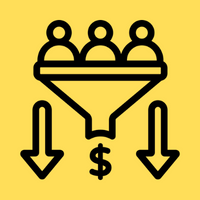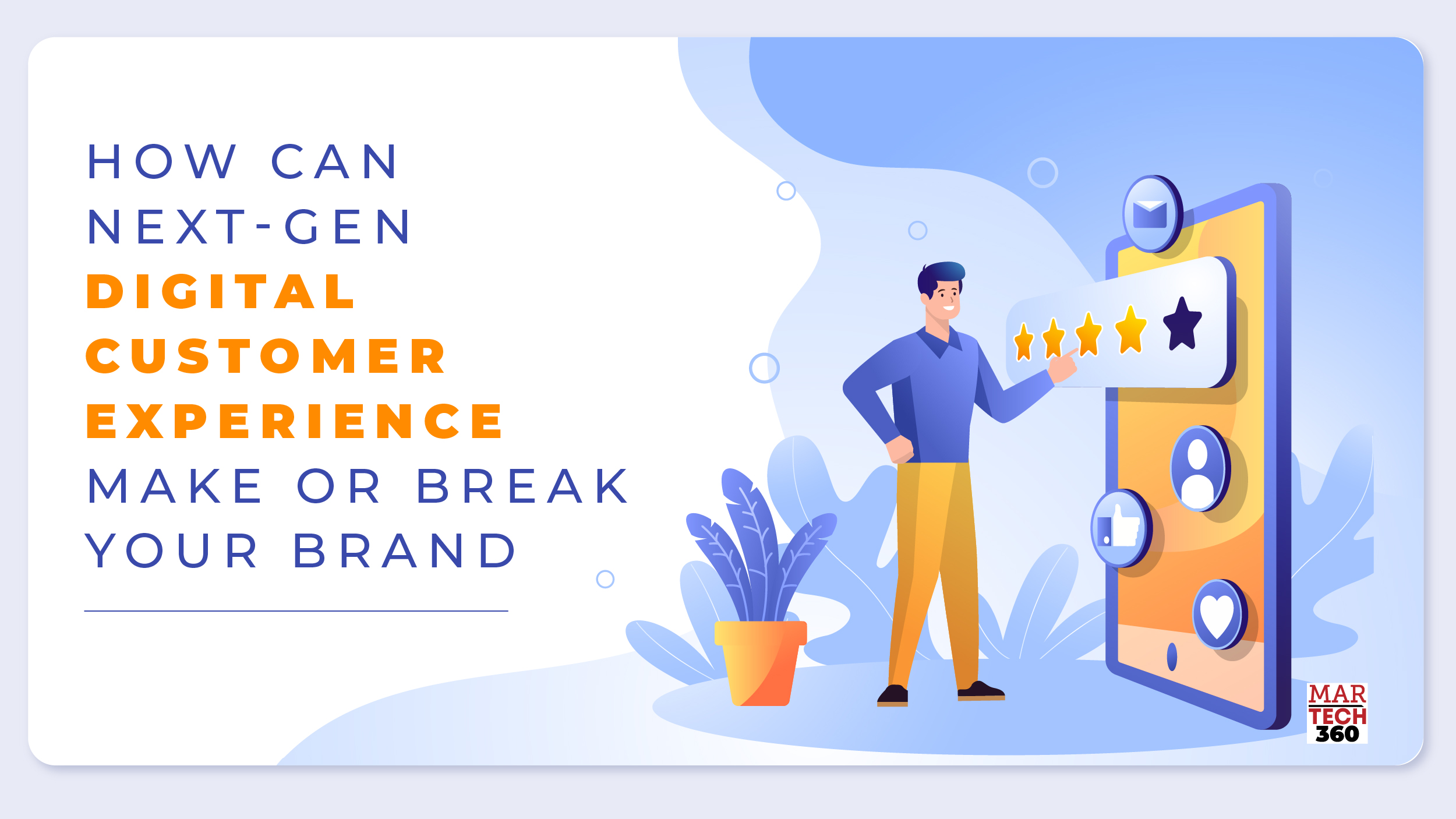Brands will need to do more than just create websites and engage in content marketing if they want to flourish in 2023 and beyond. They will provide services to clients all the way through their lifetime. By influencing preference, boosting consumer loyalty, and enabling higher pricing, digital experiences assist organizations in generating more income.
Many factors influence the demand for these kinds of experiences. First, customers have higher expectations as a result of digital disruptors who set higher standards not only for their own industries but for the entire digital landscape. Second, there are more and more digital channels and gadgets available. Third, customers anticipate a consistent brand experience across all platforms, with valuable touch points across the whole customer journey.
What is digital customer experience?
The entirety of all digital contacts between a customer and a brand, as well as the impression such interactions leave, constitutes the digital customer experience.
Today, technology is used in contemporary digital experiences to enhance or broaden our human experience. The value that technology can contribute to the human experience is what is driving its rapid evolution from the futuristic objects we once only saw in sci-fi movies to everyday objects that fit in our pockets.
Brands must concentrate on understanding the experiences that their consumers desire, then select the right technology to offer each experience if they want to develop digital experiences that add value throughout the customer lifecycle. Leading companies accomplish this by deciding on API-first solutions that integrate smoothly and offer developers the building blocks they need to create any experience.
Also Read: How Does AI in Marketing Boost Digital Marketing Tangents?
Why invest in next-gen digital experience?
The quantity of digital channels that are currently available from a business viewpoint appears overwhelming, as does the pace at which a user switches between platforms and channels in a single journey. Customers frequently switch channels as they go from awareness to consideration to purchase, making customer journeys complicated.
The distinction between online and offline, owned and non-owned, marketing and eCommerce, however, is irrelevant to the customer and is not at all confusing to them. The client expects to be able to go wherever their work or objective takes them, and this is what drives the customer journey.
Customers that engage across several channels are the most valuable to organizations, and seamless experiences are beneficial to both customers and enterprises. A Harvard Business Review study found that omnichannel customers are more valued.
According to a study by Harvard Business Review, people who use several channels to interact spend 10% more online and 4% more in stores. Additionally, they are more likely to remain. According to research, brands with the most effective omnichannel customer engagement strategies keep 89% on average of their customers as opposed to 33% of businesses with subpar strategies.
Spearheading digital sales funnels in contemporary era
In the past, it was widely believed by marketers that consumers’ paths to purchases were predictable and linear. As a result, the objective was to guide clients from one engagement to the next, perhaps leading to a sale.
Although this concept was theoretically appealing and performed admirably for a number of years, the rise of customization lately emerged as a new factor that rendered this traditional thinking obsolete. In fact, the vast majority of today’s consumers insist on a personalized experience when dealing with a business.
Awareness
 You must make it as simple as you can for potential clients to find you. When they do, it’s critical that they hear positive things. You can accomplish this by interacting with the media and influencers with the goal of generating genuine social reviews and social mentions. Additionally, improving the SEO of your web pages will raise the search rankings for your brand.
You must make it as simple as you can for potential clients to find you. When they do, it’s critical that they hear positive things. You can accomplish this by interacting with the media and influencers with the goal of generating genuine social reviews and social mentions. Additionally, improving the SEO of your web pages will raise the search rankings for your brand.
Discovery
 It’s vital that you make it straightforward and easy for customers to use your digital touchpoints. This might be achieved by just providing excellent online customer care or by even allowing in-app product or service trials.
It’s vital that you make it straightforward and easy for customers to use your digital touchpoints. This might be achieved by just providing excellent online customer care or by even allowing in-app product or service trials.
You need to be able to comprehend how customers interact with you, what their objective or purpose is when they visit your site or apps, in order to create a fantastic digital customer experience throughout the discovery phase.
Evaluate
 Customers have a dizzying array of options, and they’ll probably be evaluating goods and services from your rivals. Make sure you are aware of the components of your offering and experience that clients value if you want to stand out from the competition.
Customers have a dizzying array of options, and they’ll probably be evaluating goods and services from your rivals. Make sure you are aware of the components of your offering and experience that clients value if you want to stand out from the competition.
Ensure that your brand is represented in a way that customers value and expect across all digital media. Additionally, it is crucial that you keep an eye on and reply to comments made concerning the experience you’re offering. When navigating a seemingly limitless array of options, this is a fantastic source of directional information for people.
Conversion
 Although using secure payment platforms during the purchase phase is the minimal need, a great digital customer experience extends much beyond this. In order to limit the amount of lost sales, collect customer data to identify the reasons why buyers do not convert, such as hidden shipping costs, delivery times, or a confusing website.
Although using secure payment platforms during the purchase phase is the minimal need, a great digital customer experience extends much beyond this. In order to limit the amount of lost sales, collect customer data to identify the reasons why buyers do not convert, such as hidden shipping costs, delivery times, or a confusing website.
Also remember to include the actual goods delivery. Ensure that it is delivered promptly, securely, and safely. Simply manage those expectations with effective lines of communication if it will be late.
Experience
 The best online consumer experience continues after the transaction is complete. The moment is here to convert clients into brand promoters and raise awareness of your service. Digital platforms are excellent for encouraging customer advocacy and loyalty. While web and mobile apps can offer how-to tips or use case ideas that assist consumers get more out of their purchase, social media channels keep users informed about new upgrades and features.
The best online consumer experience continues after the transaction is complete. The moment is here to convert clients into brand promoters and raise awareness of your service. Digital platforms are excellent for encouraging customer advocacy and loyalty. While web and mobile apps can offer how-to tips or use case ideas that assist consumers get more out of their purchase, social media channels keep users informed about new upgrades and features.
Support
 Consumers will use digital means to address any issues they face, similar to the awareness phase. Additionally, 90% of our consumers say that they anticipate companies and organizations to provide an online portal for self-service.
Consumers will use digital means to address any issues they face, similar to the awareness phase. Additionally, 90% of our consumers say that they anticipate companies and organizations to provide an online portal for self-service.
You can continue to provide the kinds of experiences that customers will appreciate in these situations by using the potential of AI-powered chatbots and digital contact centers. Customers will be more satisfied and loyal to you if you allow them to self-serve, handle straightforward issues, or escalate more complicated ones quickly.
Retention
 Follow up after the sale to persuade pleased consumers to publish reviews online. Other potential clients in the awareness and discovery phase will be influenced by this. Additionally, make personalized product or deal recommendations using your knowledge of your customers’ preferences and previous behavior.
Follow up after the sale to persuade pleased consumers to publish reviews online. Other potential clients in the awareness and discovery phase will be influenced by this. Additionally, make personalized product or deal recommendations using your knowledge of your customers’ preferences and previous behavior.
To conclude on this
A fantastic product is merely the price of entry in this world. Building on a 360-degree understanding of consumers to provide an amazing experience is the only way to create brand distinction, healthy profitability, and customer engagement.
And the only way for brands to meet this fast changing expectation is through digital transformation. What appeals to Millennial consumers today might be too expensive for Generation X or even Baby Boomers to afford in the future. The only businesses that will be able to react quickly enough are those who establish flexible digital infrastructure.


Comments are closed.